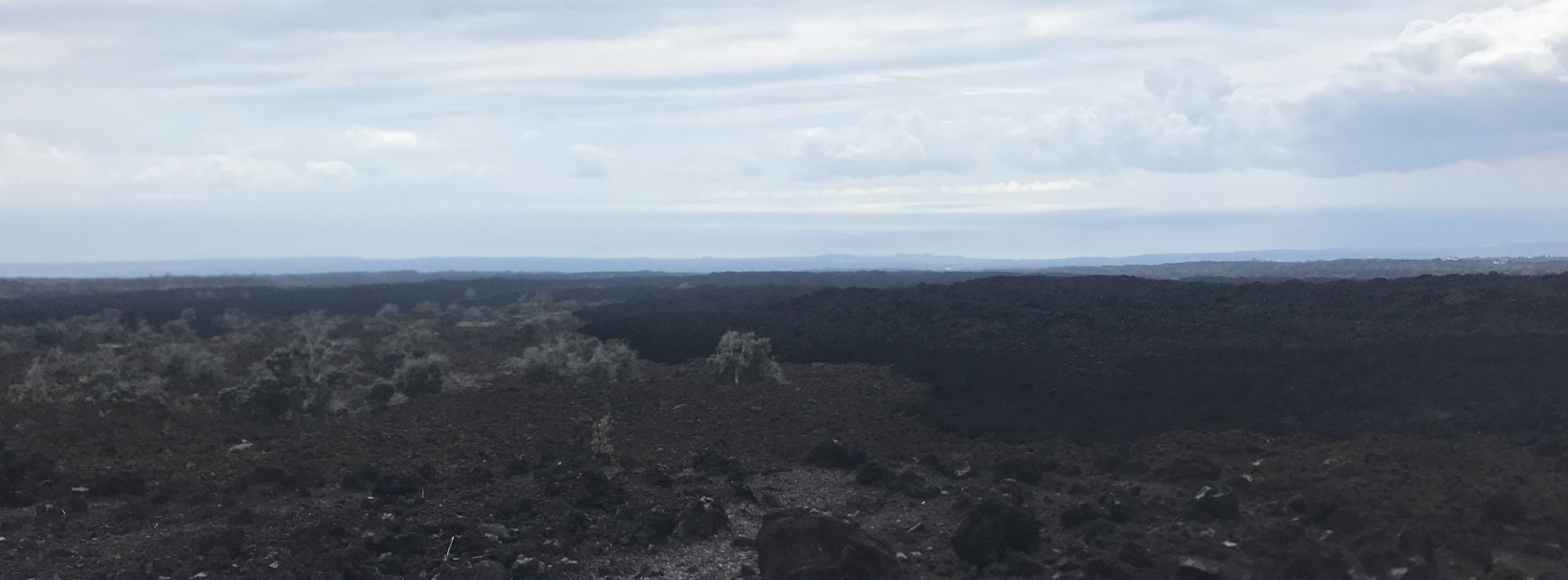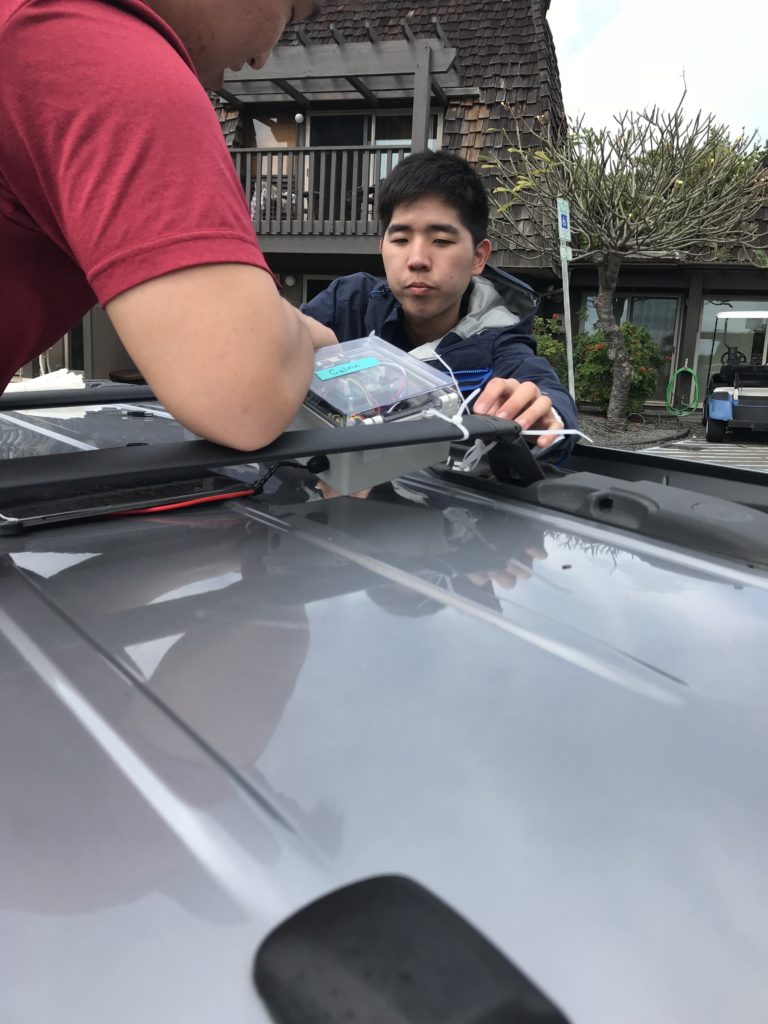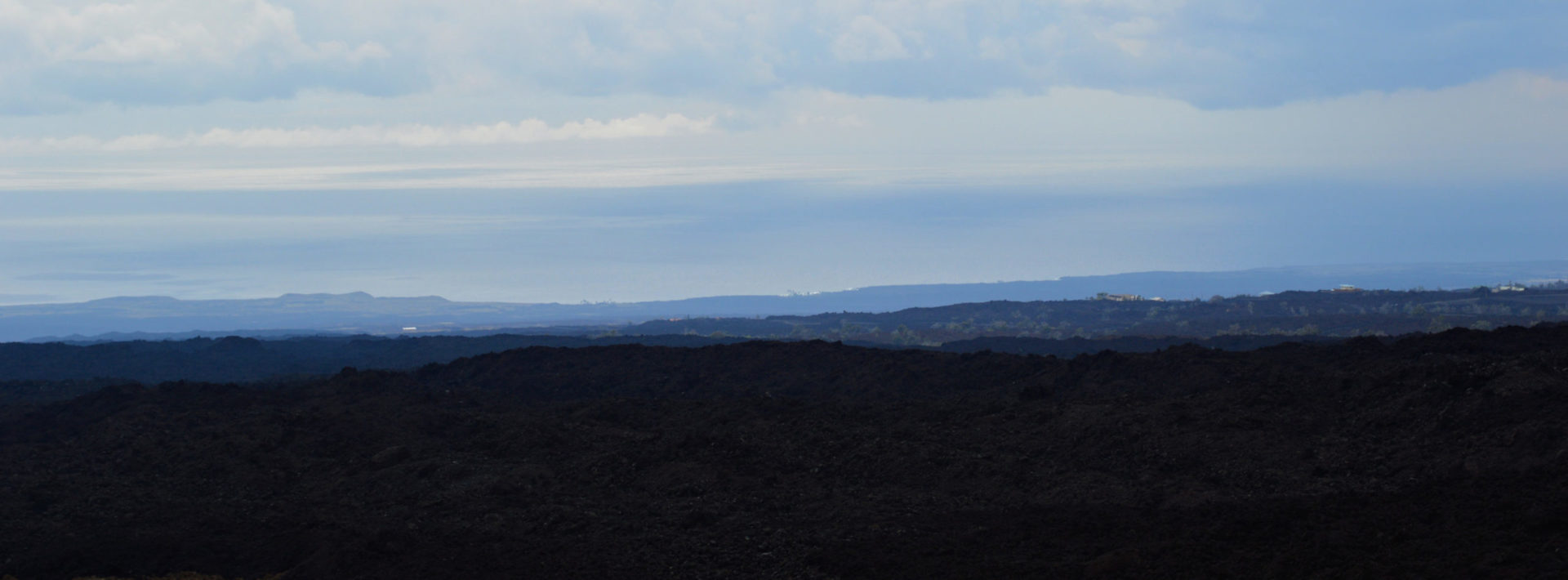TREX 2018 Day 7: To Kona and Back!

By Josh Wilson ‘19

One of the landscapes along the way.
First off, we’ve been here for a week! Wow. It feels like a month when I look back on our time here so far, but in the moment, time has been flying. I did not sleep very well last night and I was a little worried about my energy levels going into the work-intensive part of the day. A moment later I remembered that coffee exists and all concerns went away. The biggest difference about this morning other than the location, was the rainfall. Typically the mornings have light mists – nothing serious. Today, however, it was an absolute monsoon.
I went on quite the heroic run given the weather, and currently have doubts about that decision as I now have no dry footwear. Shortly after I got back from the run, the thunder and lightning began, if it had started 30 minutes earlier I would have been forced to stay inside and my running shoes would be dry right now – but what’re you going to do.
After a quick shower, Meghan, David, Chang, and I set about finding the packed up particulate matter sensors and preparing for our daily task. With the other Josh (TA Josh, graduate student) at the wheel, the four of us needed to place these sensors along the path from Volcano to Kona, wrapping around the island. While it might seem random at first, this route was chosen for a very specific reason.
Hawaiian winds originate from the north-eastern direction with respect to the big island, moving in the south-western direction. As these winds pass over the island, they are diverted by Mauna Loa. Some wind goes through the valley in the middle of the island, while the other parts wrap around the outsides of the island. The particulate matter we are interested in originates from Kilauea. The air contaminants get caught up in the winds and follow this exact route all the way to Kona. Also known as a plume, this phenomenon is incredibly unique to the topography and placing sensors throughout the route provides valuable information about the dispersion of the particulate matter.

Rough out-line of our trip to Kona.
I perceived the main challenge of the endeavor to be finding people that would allow us to place our sensors on their property for 24-48 hours to get these important readings. I learned just how important networking and simple interaction with strangers is to the success of any project. I would be lying if the concept of asking someone for permission to use their property left me without the tiniest bit of apprehension heading into our voyage. As expected, these were not legitimate fears, and the Hawaiian people are the kindest I have come across in a very long time. We now have sensors at schools, fire stations, police stations, and a Thai restaurant along the route. Everyone was more than willing to help and moreover, interested and excited about the research we were doing.
In my mind, the highlight of the day was early in the trip when we stopped at a resort close to the black sand beach we ventured to yesterday. While we waited for the employees at the main office to return from their lunch break, we mounted a sensor on top of the car to track the changes in particulate matter throughout the trip. David hopped up on top of the mini-van and got to finagling a way to mount the sensor (which happened to be Calvin! – check back to my post from Day 2 if the reference is way over your head). Roughly thirty zip-ties, some tape, and multiple concerned looks from resort residents later, Calvin the sensor was put in place and there to stay. We were officially “plume chasers.”

David and Chang mount Calvin to the top of our mini-van.
Writing on our return to the air-bnb right now, I am pleased to inform you that Calvin is still alive and did not fall off the minivan…yet (we have about an hour to go). I am sleepy, but filled with anticipation since we will take a peek at the data within Calvin this evening. Another great day in the books.
Every year, a group of MIT students and professors travel to the Big Island of Hawaii to gain fieldwork experience through TREX (Traveling Research Environmental EXperiences). The first TREX trip was held in 2000, and since launching has taken students on research activities in domestic and international settings. For more undergraduate opportunities, click here.



